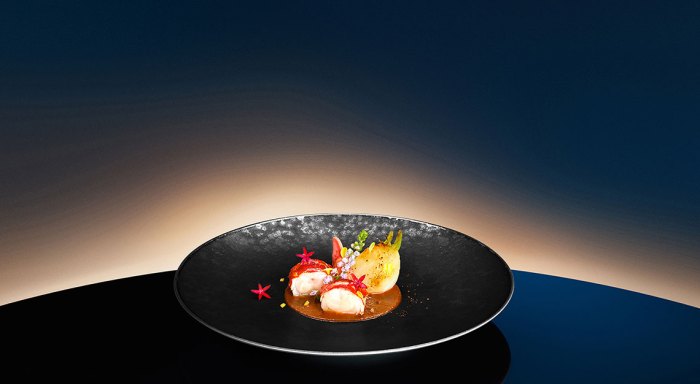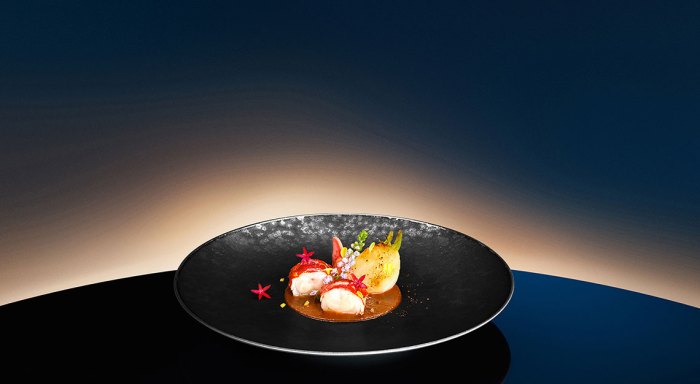Getting around New Orleans, a city brimming with charm and history, can be a delightful experience when you know the right options. From the iconic streetcars to hopping on a ferry, and even exploring on two wheels, this comprehensive guide will equip you with the knowledge to navigate the city like a local. We’ll delve into all the transportation methods, from public transport and taxis to bike rentals and ride-sharing services, providing insights into their pros and cons.
This detailed guide will help you plan your journeys, covering everything from the best walking routes through the French Quarter and Garden District to optimized itineraries for a 3-day trip. We’ll also consider accessibility and mobility, ensuring everyone can enjoy the city’s vibrant culture and history.
Transportation Options in New Orleans
New Orleans, a city steeped in history and vibrant culture, offers a variety of transportation options to navigate its unique layout. From the historic French Quarter to the bustling Warehouse District, understanding the available modes of transport is key to experiencing the city efficiently and comfortably. Exploring the city by foot is a great way to soak in the atmosphere, but for longer distances or varied destinations, public transportation provides a convenient and affordable alternative.Public transport in New Orleans is an integral part of the city’s charm, offering a blend of historic streetcars and modern bus routes.
This system provides a cost-effective way to move around, particularly for those who wish to avoid traffic congestion or parking hassles.
Public Bus System
The New Orleans Regional Transit Authority (RTA) bus system is a comprehensive network covering the city and its surrounding areas. The system is designed for broad accessibility, with routes reaching most neighborhoods and points of interest.
- Pros: Extensive coverage, affordability, and good connectivity to various parts of the city.
- Cons: Bus schedules can be inconsistent, potentially leading to delays, and some routes might not be the fastest option, particularly during peak hours.
- Accessibility: The buses are generally accessible to people with disabilities, and often have ramps and other features to facilitate access.
Streetcar System
The streetcar system, with its historic charm, is a unique feature of New Orleans’ transportation network. The iconic St. Charles Avenue streetcar, in particular, offers a historical experience.
- Pros: Scenic routes, offering a glimpse of the city’s architectural beauty, and frequent service along specific corridors.
- Cons: Limited coverage compared to buses, and routes might not always be the most direct option for reaching all destinations.
- Accessibility: Streetcars are generally accessible to people with disabilities, often featuring ramps and designated seating areas.
French Quarter Streetcar
This historic streetcar line is a popular tourist attraction, offering a charming and scenic way to explore the French Quarter.
- Pros: Unique historical experience, ideal for sightseeing in the French Quarter, and generally runs on a frequent schedule, making it convenient for tourists.
- Cons: Limited routes, and primarily focused on the French Quarter, which might not be suitable for travelers wanting to reach other parts of the city.
- Accessibility: The French Quarter streetcar is accessible to people with disabilities.
Public Transport Passes and Tickets
Various options are available for navigating the New Orleans public transportation system. The system offers flexible pricing based on usage.
- Day passes: Ideal for tourists or locals who plan to use the system multiple times in a single day.
- Multi-day passes: A cost-effective option for travelers intending to use the system for multiple days, such as during a vacation.
- Unlimited passes: Provides unlimited rides for a specified period, best suited for frequent users or those who plan to use the system extensively.
Comparison Table
| Transportation | Speed | Cost | Convenience |
|---|---|---|---|
| Buses | Moderate | Low | Moderate |
| Streetcars | Moderate | Moderate | High (for specific routes) |
| French Quarter Streetcar | Slow | Moderate | High (for French Quarter) |
Walking and Exploring the City
New Orleans boasts a unique charm that’s best experienced on foot. The city’s architecture, vibrant culture, and numerous attractions are spread across distinct neighborhoods, making walking an ideal way to immerse yourself in the local flavor. From historic squares to hidden courtyards, each step reveals a piece of the city’s rich history and lively present. Discover the captivating rhythm of life in the French Quarter, wander through the Garden District’s elegant mansions, or explore the vibrant streets of the Marigny.Walking allows you to truly appreciate the city’s scale and energy.
You’ll stumble upon unexpected discoveries, interact with locals, and absorb the atmosphere in a way that public transport simply can’t match. It’s a personal journey of exploration, fostering a deeper connection with the city’s spirit.
Best Walking Routes for Tourists
New Orleans offers several excellent walking routes for tourists, catering to varying interests and time constraints. The French Quarter, with its historic buildings and narrow streets, is a must-see. Exploring the Garden District, renowned for its stunning architecture and beautifully landscaped gardens, is another popular choice. The Marigny and Bywater neighborhoods, known for their vibrant arts scene and unique boutiques, provide a taste of the city’s alternative side.
Historical Sites, Museums, and Attractions Accessible on Foot
New Orleans offers a wealth of historical sites, museums, and attractions easily accessible on foot. The French Quarter is packed with historic landmarks, including Jackson Square, St. Louis Cathedral, and the Cabildo. The Louisiana State Museum, the National WWII Museum, and the Ogden Museum of Southern Art are all within walking distance of each other, offering a rich tapestry of history and art.
Importance of Pedestrian-Friendly Areas in New Orleans
Pedestrian-friendly areas are crucial for experiencing the heart of New Orleans. They facilitate interaction between residents and tourists, fostering a sense of community and encouraging a slower pace of life, allowing visitors to fully immerse themselves in the city’s ambiance. The French Quarter, with its narrow streets and numerous restaurants, exemplifies the importance of pedestrian-friendly spaces, inviting people to linger and explore.
Navigating New Orleans can be a breeze, especially if you’re prepared. For instance, consider packing some essential travel items, like those found in the “nurse approved just in case travel essentials amazon” list, nurse approved just in case travel essentials amazon for example, which are perfect for any unexpected situation. Having a backup plan is always a good idea when exploring the unique neighborhoods and attractions this city has to offer.
Walking Distances and Estimated Times Between Key Attractions
| Attraction 1 | Attraction 2 | Distance (approx.) | Estimated Time |
|---|---|---|---|
| Jackson Square | St. Louis Cathedral | 0.2 miles | 5-10 minutes |
| French Market | Cabildo | 0.5 miles | 10-15 minutes |
| National WWII Museum | Ogden Museum of Southern Art | 1 mile | 20-25 minutes |
| Garden District | Lafitte’s Blacksmith Shop | 2 miles | 30-40 minutes |
Walking is a perfect way to appreciate the unique charm of New Orleans.
Taxis and Ride-Sharing Services: Getting Around New Orleans
New Orleans offers a variety of transportation options beyond walking and exploring the city on foot. Understanding the nuances of taxis and ride-sharing services is crucial for navigating the city efficiently. These services often offer different levels of convenience, pricing structures, and customer experiences, making informed choices vital.Ride-sharing and traditional taxi services are now integral parts of the city’s transportation network.
Understanding their strengths and weaknesses is essential for choosing the best option for your needs. This section will delve into the specifics of taxi services, ride-sharing availability, and how they compare.
Taxi Services in New Orleans
Taxi services in New Orleans are readily available, particularly in the central business district and tourist areas. Fares are typically metered, and rates are influenced by distance and traffic conditions. While generally reliable, the availability and wait times can fluctuate, especially during peak hours. Expect potential variations in pricing based on the time of day and the area.
Factors such as surge pricing or extra fees for baggage may apply.
Ride-Sharing Services in New Orleans
Uber and Lyft are prevalent ride-sharing services in New Orleans. Their accessibility and convenience make them popular choices, especially for travelers. Drivers are typically available throughout the city, ensuring quicker responses and wider coverage than traditional taxis, particularly in less-populated areas. Real-time pricing and potential surge pricing adjustments based on demand are typical aspects of these services.
Comparison of Taxi and Ride-Sharing Services
Ride-sharing services and taxis cater to distinct needs and preferences. A crucial comparison involves cost, reliability, and booking processes.
| Service | Cost | Reliability | Booking Process |
|---|---|---|---|
| Taxi | Generally metered, with potential for fluctuating rates based on traffic and distance. Additional fees may apply. | Generally reliable, especially in central areas. Availability can fluctuate during peak hours. | Direct interaction with the driver or using a taxi app. Waiting time can be variable. |
| Ride-Sharing (Uber/Lyft) | Real-time pricing, often influenced by demand (surge pricing). Base fares and per-mile rates are generally displayed. | Generally reliable due to the large driver network. Wait times are often shorter compared to taxis, especially in less-populated areas. | Booking through a mobile application, providing immediate confirmation and tracking. Waiting times are usually displayed. |
Bicycle Tours and Rentals

New Orleans, with its unique charm and historic architecture, offers a fantastic way to explore the city by bicycle. Beyond the iconic French Quarter, the city’s network of bike paths and charming streets makes cycling an enjoyable and efficient way to experience its vibrant culture and hidden gems. Exploring by bike allows you to appreciate the city’s rhythm at a slower pace, perfect for soaking in the atmosphere and taking in the sights.The city’s layout, while sometimes intricate, is surprisingly bike-friendly in many areas.
A network of bike lanes and dedicated paths makes it safe and comfortable for cyclists, though careful navigation is still essential. Rentals are widely available, making it easy to experience the city’s unique appeal from a different perspective.
Bicycle Rental Options
A variety of bicycle rental companies cater to different needs and preferences. Many shops in the French Quarter and along popular tourist routes offer rentals, from basic city bikes to more specialized options like electric bikes. These shops often provide detailed information about available routes and tours, allowing you to choose the experience that suits you best. Consider checking online booking platforms or contacting shops directly to secure your rental in advance, particularly during peak season.
The prices for bicycle rentals generally vary based on the type of bike, duration of rental, and any additional services included.
Popular Bicycle Tour Routes and Companies
New Orleans boasts several reputable bicycle tour companies. Many offer guided tours covering various themes, including historical explorations, culinary experiences, and scenic routes through the city’s neighborhoods. A popular route is often the scenic loop through the Garden District, which showcases beautiful mansions and lush greenery. Other routes might focus on the French Quarter, exploring its historic streets and iconic landmarks.
It is advisable to research different tour companies to find the best fit for your interests and budget. Some companies specialize in guided tours with knowledgeable guides, while others might offer self-guided options with detailed maps and itineraries.
Benefits of Cycling in New Orleans
Cycling offers numerous advantages as a mode of transportation in New Orleans. The city’s relatively flat terrain makes it an accessible and enjoyable option for navigating various neighborhoods. Cycling allows for a more intimate view of the city’s unique architecture, street art, and vibrant local businesses. It also provides a healthy and environmentally conscious way to get around, reducing your carbon footprint.
Navigating New Orleans can be a breeze, with its iconic streetcars and walkable neighborhoods. However, if you’re planning a trip during Dia de los Muertos, be sure to check out resources like dia de los muertos what to know for local events and potential traffic disruptions. Knowing the local customs can enhance your overall experience, whether you’re taking a stroll or hopping on a streetcar.
The experience of navigating the city by bike is different and often more engaging than using other forms of transportation. Cycling allows for a deeper immersion in the city’s atmosphere and cultural landscape.
Bike-Friendly Areas and Routes
New Orleans has several bike-friendly areas, particularly along the Mississippi Riverfront. The area offers dedicated bike paths and trails, providing a scenic and safe route for leisurely rides. These areas are often well-maintained and well-lit, making them ideal for both tourists and locals. In addition to the riverfront, many neighborhoods have designated bike lanes, making it possible to cycle through different parts of the city.
Planning your route ahead of time will help you maximize your experience and ensure you enjoy the best aspects of the city. It is crucial to be aware of traffic laws and signals when cycling, as with any form of transportation.
Ferry Services

New Orleans’ unique geography, with its network of waterways, makes ferry services a valuable transportation option. These ferries offer a different perspective of the city, providing a scenic route to various destinations, and a relatively affordable way to get around. They’re particularly useful for reaching areas not easily accessible by car or public buses.Ferry services are an integral part of the city’s transportation infrastructure, providing an alternative to traffic congestion and offering a glimpse into the city’s rich history through its waterways.
Ferry Routes and Schedules
Ferry routes and schedules vary, and often depend on the specific area. Generally, schedules are available online and at various locations in the city. A reliable resource for finding the most up-to-date schedules is the official city transportation website. Frequent departures are common during peak hours, and schedules are usually designed to align with the needs of commuters and tourists.
Destinations Accessible via Ferry
Ferry services provide access to a number of points in the city and its immediate surroundings. This includes destinations like Algiers Point, which is a historic neighborhood with unique attractions and shops. Many ferry routes connect to the city’s industrial areas and the surrounding neighborhoods, offering convenient access to residential and commercial zones. Some ferry lines even extend beyond the city limits, providing connections to adjacent municipalities.
Navigating New Orleans can be a delightful adventure, with its unique streetcars and charming neighborhoods. Thinking about exploring further afield? Why not check out some of the best places to visit in Spain, like the vibrant cities and stunning landscapes? best places to visit in spain. Ultimately, getting around the city is best done by embracing its quirky charm and enjoying the ride, whether by foot, streetcar, or taxi.
Advantages of Using Ferries
Ferries provide a unique and often scenic way to navigate the city’s waterways. They can be more affordable than other transportation options, like taxis or ride-sharing services. Ferry travel offers a relaxing and tranquil way to experience the city. The slower pace of ferry travel allows passengers to enjoy the scenery and appreciate the unique architecture of the city.
Disadvantages of Using Ferries
Ferry schedules can sometimes be inflexible, meaning that the routes may not always be suitable for tight schedules. Ferry travel can be affected by weather conditions, particularly during periods of strong winds or heavy rain. The journey times can be longer compared to other modes of transport. The accessibility of ferry terminals may also vary, and not every area is directly served by ferry routes.
Getting Around Specific Areas
New Orleans boasts a vibrant array of neighborhoods, each with its own unique charm and character. Navigating these areas effectively requires understanding the best transportation options for each. This section delves into the most efficient methods for getting around the French Quarter, the Garden District, Uptown, and historic neighborhoods.The city’s diverse transportation options, from leisurely strolls to swift rideshares, cater to varying preferences and needs.
Knowing how to utilize these methods will make your exploration of New Orleans smoother and more enjoyable.
Navigating the French Quarter, Getting around new orleans
The French Quarter is a pedestrian-friendly area, perfect for exploring on foot. Cobblestone streets and historic architecture invite strolling and discovery. However, for longer distances or when carrying luggage, streetcars and taxis provide efficient alternatives. The St. Charles Avenue streetcar line offers a scenic route through the Quarter, providing a relaxing way to see the sights.
Taxis are readily available for quicker trips, particularly to points outside the immediate pedestrian-friendly zones.
Exploring the Garden District and Uptown
The Garden District and Uptown areas are characterized by wider streets and grand homes. Walking is pleasant, but streetcars, particularly the St. Charles Avenue line, offer a convenient and scenic way to traverse these areas. Ride-sharing services are also readily available for quicker travel to specific locations. The spacious nature of these neighborhoods often lends itself to a combination of walking and using public transport.
Visiting Historic Neighborhoods
Several historic neighborhoods outside the French Quarter deserve exploration. These neighborhoods, such as the Treme and Bywater, often have limited direct streetcar access. Walking is still a fantastic way to experience the local character and atmosphere. Taxis and ride-sharing services provide a reliable option for getting to and from these destinations, particularly if your itinerary involves multiple neighborhoods.
Transportation Comparison Table
| Neighborhood | Best Transport | Reasons |
|---|---|---|
| French Quarter | Walking, Streetcars, Taxis | Walking is ideal for exploration, streetcars are scenic, and taxis are quick for longer distances. |
| Garden District & Uptown | Streetcars, Walking, Ride-Sharing | Streetcars offer a scenic route, walking is enjoyable, and ride-sharing is convenient for specific destinations. |
| Historic Neighborhoods (e.g., Treme, Bywater) | Walking, Taxis, Ride-Sharing | Walking allows for neighborhood immersion, taxis/ride-sharing are convenient for travel between neighborhoods. |
Accessibility and Mobility Considerations
New Orleans, a vibrant city brimming with culture and history, strives to be welcoming to all visitors. Understanding the accessibility of transportation options is crucial for ensuring a smooth and enjoyable experience for everyone, especially those with mobility limitations. This section will delve into the availability of accessible public transport, specialized transportation options, and mobility aids to enhance the travel experience for all.This section provides essential information for visitors with mobility needs, outlining the various accessible transportation options available in New Orleans, aiding in the planning of their trip.
It also covers the availability of wheelchair rentals and mobility aids, helping visitors to confidently navigate the city.
Accessibility of Public Transport
New Orleans public transportation, while generally extensive, needs specific consideration for accessibility. The system aims to accommodate various mobility needs, though further improvements are always welcomed. Information on accessible routes and schedules is readily available from the official New Orleans public transportation website. Knowing the specifics of accessible routes and their schedules is essential for efficient travel.
Accessible Transportation Options for Tourists with Mobility Limitations
Several transportation services cater specifically to individuals with mobility limitations. These services can include pre-booked taxis with wheelchair ramps or accessible ride-sharing options, offering convenient and tailored transport. Specific inquiries should be made with the respective service providers for detailed accessibility features. This is critical for planning efficient travel and ensuring comfort.
Wheelchair Rentals and Other Mobility Aids
Numerous rental locations offer wheelchairs and other mobility aids, ensuring accessibility for visitors. Rental agencies can be located through online searches or local tourism offices. This accessibility empowers tourists with mobility limitations to explore the city at their own pace. Always verify the availability and suitability of the mobility aid before your trip.
Strategies for Ensuring Smooth Travel for All Visitors
Planning ahead is key to ensuring a smooth and accessible experience. Check the accessibility features of attractions, restaurants, and hotels in advance. Communicating any specific needs to relevant parties, including hotels, tour operators, and transportation services, will enhance the travel experience. For instance, pre-booking accessible taxis or ride-sharing services is highly recommended. Furthermore, utilize readily available information resources for accessibility.
By proactively addressing mobility needs, the city can ensure a welcoming and inclusive environment for all.
Planning a Trip
New Orleans, with its unique charm and vibrant culture, offers a plethora of experiences. To truly savor the city, careful planning is key, especially when considering the various transportation options available. This section details how to craft a personalized itinerary, combining transportation with your chosen interests, to make the most of your trip.
Creating a Personalized Itinerary
A well-structured itinerary is crucial for maximizing your time and enjoyment. Begin by defining your interests – be it exploring historic districts, indulging in culinary delights, or experiencing live music. This personalized approach ensures you prioritize activities that resonate most with you. Consider the duration of your stay, as a longer trip allows for a deeper exploration and more comprehensive experience.
Optimizing Travel Time with Transportation
Transportation plays a pivotal role in crafting a seamless itinerary. Understanding the best modes of transport for specific activities will save valuable time and energy. Walking is excellent for exploring neighborhoods and experiencing the local atmosphere, while ride-sharing or taxis are efficient for longer distances or when carrying luggage. A well-planned itinerary will minimize travel time, allowing you to maximize your time in New Orleans.
Sample Itinerary: A 3-Day Trip
This sample itinerary combines various transportation options to showcase how to optimize your time.
| Day | Activity | Transportation | Time |
|---|---|---|---|
| Day 1 | French Quarter Exploration: Walking tour, lunch at a local cafe, visit Jackson Square. | Walking, ride-sharing for longer distances. | Morning to early evening. |
| Day 2 | Garden District Tour: Visiting iconic homes, exploring shops and boutiques, dinner in the Garden District. | Ride-sharing, walking. | Morning to late afternoon. |
| Day 2 (Evening) | Jazz Performance in the French Quarter | Walking, ride-sharing | Evening |
| Day 3 | Streetcar ride through the city, exploring the Marigny neighborhood, lunch at a casual restaurant, and visit a local market. | Streetcar, Walking, ride-sharing. | Morning to early evening |
This sample itinerary provides a framework. Adjust it to fit your specific interests and preferences, ensuring you allocate sufficient time for each activity and factoring in travel time between locations. Consider using a map application like Google Maps to get real-time directions and estimated travel times.
Final Conclusion
In conclusion, navigating New Orleans is a personalized adventure. This guide has provided you with a wealth of options, from the historical charm of the streetcars to the modern convenience of ride-sharing services, and everything in between. Whether you’re a history buff, a foodie, or a lover of live music, this guide will empower you to explore the city’s diverse neighborhoods at your own pace, with informed choices and well-planned routes.
Embrace the unique character of New Orleans, and let your exploration begin!




























